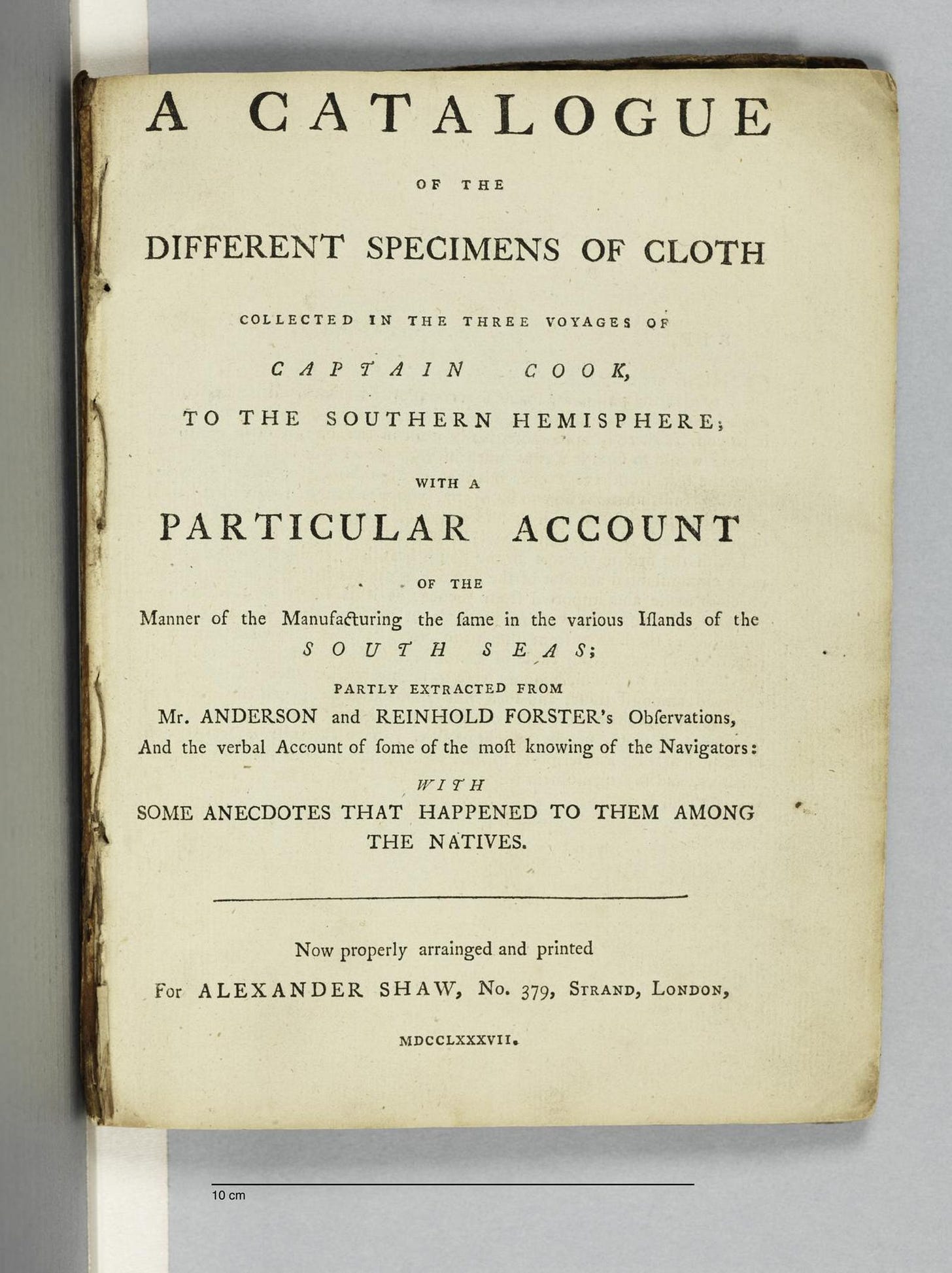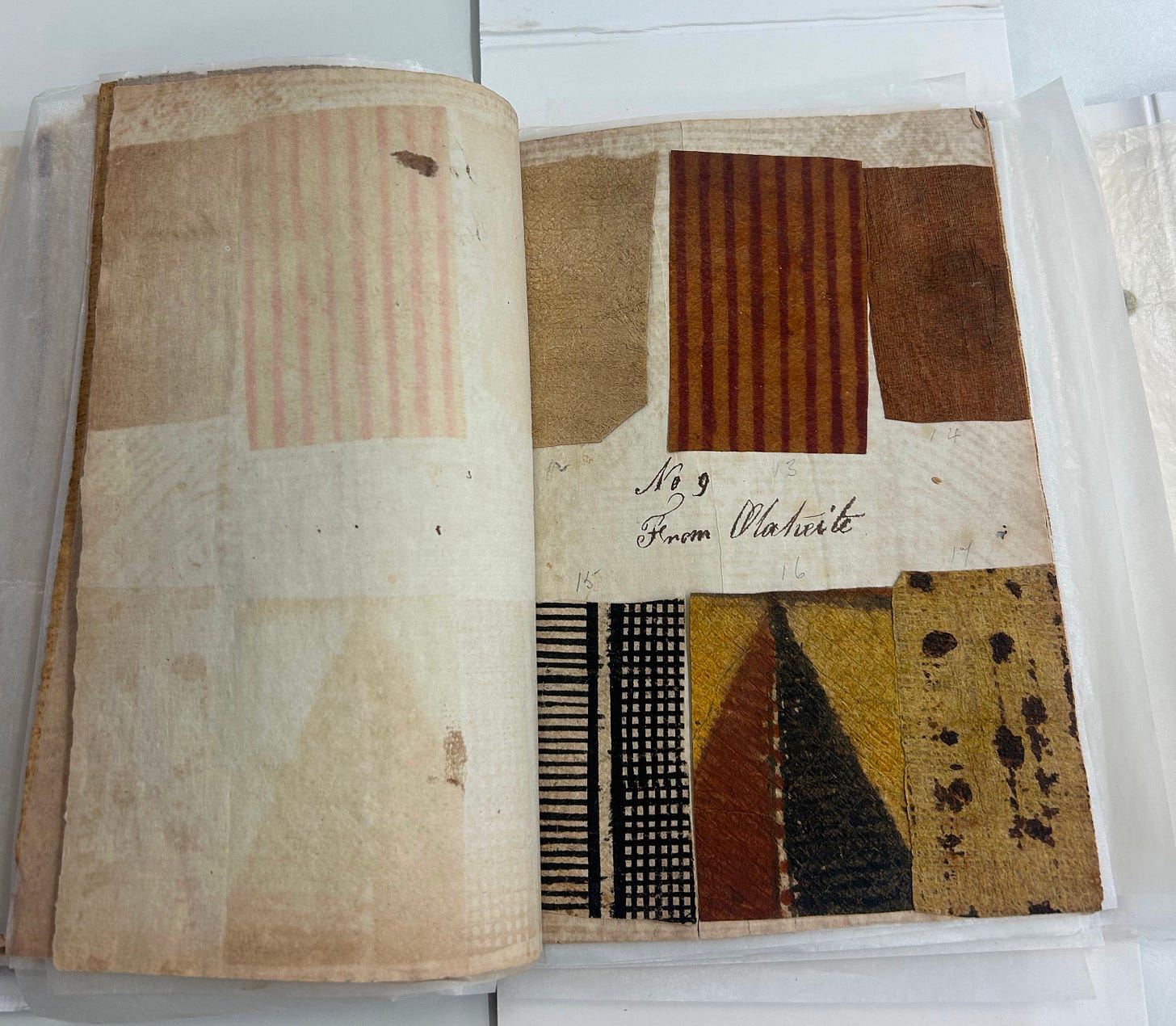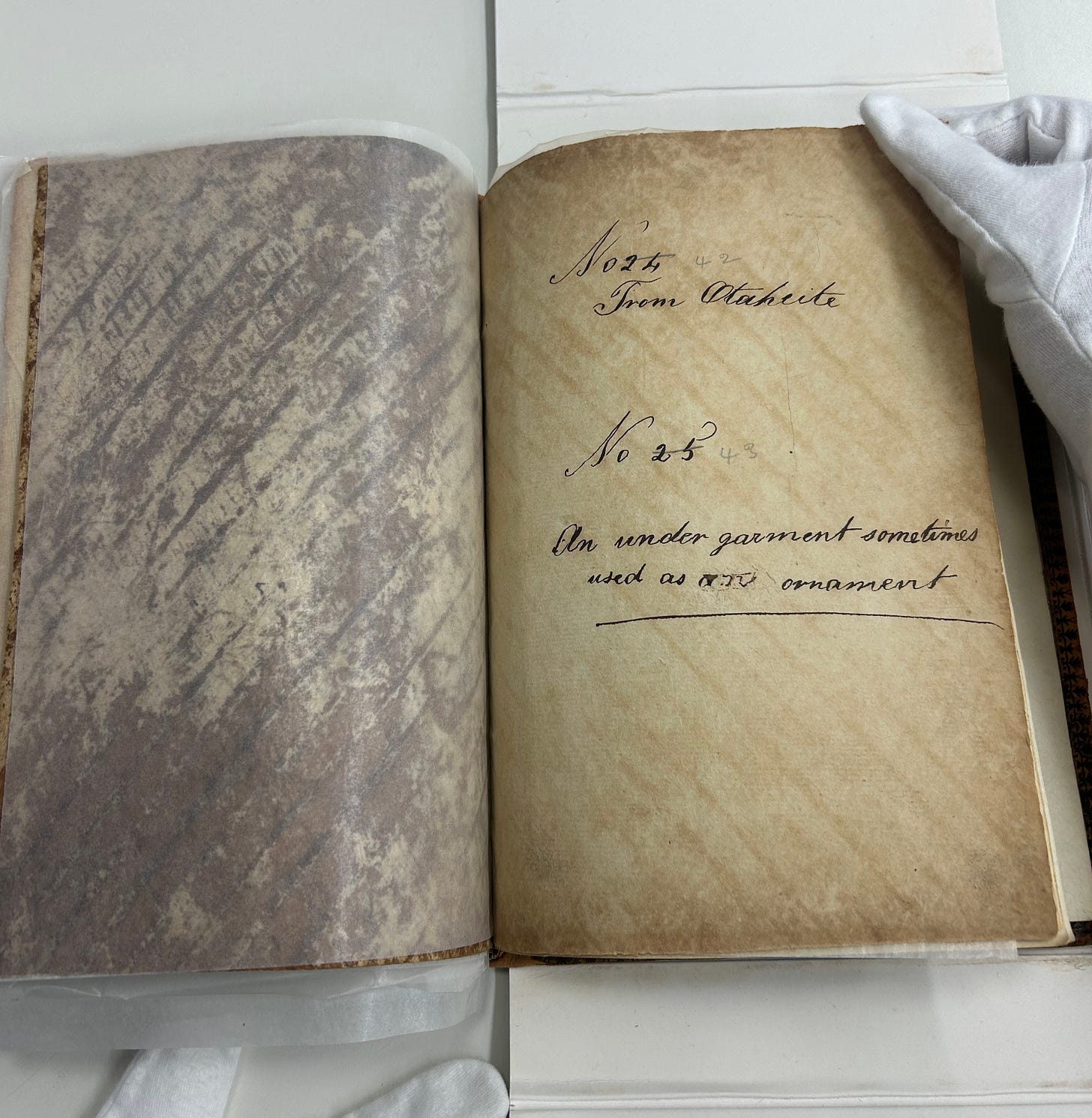
A catalogue of the different specimens of cloth collected in the three voyages of Captain Cook, to the Southern Hemisphere; with a particular account of the manner of the manufacturing the same in the various islands of the South Seas; partly extracted from Mr Anderson and Reinhold Forster's observations, and the verbal account of some of the most knowing of the navigators: with some anecdotes that happened to them among the natives.
…is the full title of a series of books or catalogs that contain hastily cut and pasted squares of various sizes of cloth collected during the three voyages of James Cook that spanned the years 1768-1779. The books are compiled by an Alexander Shaw who is thought to have acquired the cloth in an auction. Not much is known about him. The most recent census of these books was conducted in 2015 by a Dr. Donald Kerr who at the time was the Special Collections Librarian at the University of Otago. Dr. Kerr estimated 66 books were in existence.
Tapa cloth, as it is widely known throughout the Pacific, (ahu in Tahiti and kapa in Hawai‘i) is pounded bark cloth of impressive craftsmanship that often has inked patterns and materials specific to the region and more specific village and is used heavily in trading and ceremony. Beyond these uses, it had been seen everyday and an active part of life making up the walls of homes and the floor of beds. The tapa in the Shaw books comes primarily from Hawai‘i (named The Sandwich Isles in the books) and Tahiti (named Otaheite in the books).
The books were created during a huge demand for anything and everything from the South Seas which was created and exacerbated by the voyages of James Cook and the subsequent literary publishing flood of stories about the South Seas. There are accounts of the voyages of James Cook came back with hundreds of feet of the barkcloth and to increase availability of this cloth for collectors Shaw decided to cut up pieces and distribute them in catalog/scrapbook like form which included anecdotes from the diaries of men on the voyages, then compiled in this series.
There are a couple of primary reasons why these books have not been readily accessible: 1. the unusual format, a hybrid that is part printed book and part collected artifacts, leaves catalogers unsure of how to describe the items, 2. the books have existed as individual copies separate from each other for so long, which has resulted in lone records, linking them and compiling the history gained from each unique book would be a feat across oceans, 3. a primary interest in the provenance of the books and their connection to James Cook rather than the incredibly rare and fragile artifacts that are contained in them. Experts on the artifacts could inform best preservation practices and facilitate research on the materials that can further our knowledge of tapa from this time period. It is likely that catalogers and researchers relied solely on the annotation of the original compilers which may not be entirely or any accurate.
I don’t think though that provenance is of utmost importance with these books as many papers on the series believes so. Adrienne Kaeppler writes about the “curiosities” aboard Cook’s ships and thought it “astonishing to find that … little is known about the location of objects collected on the [Cook] voyages and those that are available remain largely unused in serious studies of material culture” (Artificial Curiosities, p.xiii). I imagine that Cook has been the center of research here rather than the artifacts that have been carefully preserved because of their proximity to his infamy.
With more effort to make these artifacts accessible to patrons and researchers we could begin to piece together which square pieces are cut from the same cloth but have lived apart for 230+ years! It would be incredible to put all of the books in the same room to be acknowledged as stores of valuable information and recognized beyond a European collection of “ethnographic objects” as these are tapa that were created before contact with the British!
A full descriptive cataloging of each book has not yet been conducted, this would mean analyzing each page and sample of tapa, and would be so valuable to future researchers and connections to be made outside of the lens of Captain Cook.








